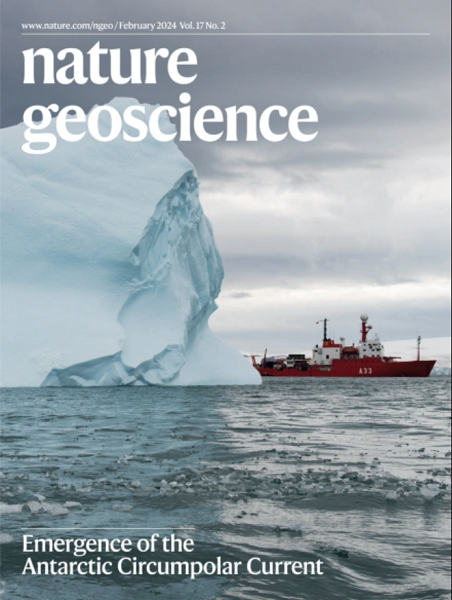平底俯冲过程中水流推动地壳熔融形成斑岩铜矿
IF 15.7
1区 地球科学
Q1 GEOSCIENCES, MULTIDISCIPLINARY
引用次数: 0
摘要
关于汇聚板块边界沿线斑岩型铜矿床的形成,普遍的看法是,从俯冲带上方的地幔楔中提取的含金属的幼生岩浆在地壳深部分异。然而,许多主要斑岩区都是在地幔楔减弱或消失的平板俯冲时期形成的,因此成矿岩浆的来源并不清楚。亚利桑那州晚白垩世-古新世拉里酰胺斑岩区形成于北美洲下方法拉隆板块的平底俯冲时期,我们在这里利用地质年代学和热压测量法研究了该斑岩区形成过程中的地壳深部过程。我们的研究表明,拉拉尼花岗岩的同位素特征与新生代地壳源一致,该地壳源可能富含铜。这一来源在 73-60 Ma 之间经历了水流熔融,与花岗岩岩浆活动(78-50 Ma)、斑岩成因(73-56 Ma)和平板俯冲(70-40 Ma)的高峰期相吻合。为了解释拉里酰胺斑岩省的形成,我们提出,来自法拉隆平板块前缘的挥发物促进了黑云母和长英质预富集下地壳的熔融,而不需要来自地幔楔的大量岩浆或金属输入。其他具有平板制度的汇聚板块边界也可能经历类似的挥发物介导的下地壳熔化机制。本文章由计算机程序翻译,如有差异,请以英文原文为准。


Porphyry copper formation driven by water-fluxed crustal melting during flat-slab subduction
The prevailing view of the formation of porphyry copper deposits along convergent plate boundaries involves deep crustal differentiation of metal-bearing juvenile magmas derived from the mantle wedge above a subduction zone. However, many major porphyry districts formed during periods of flat-slab subduction when the mantle wedge would have been reduced or absent, leaving the source of the ore-forming magmas unclear. Here we use geochronology and thermobarometry to investigate deep crustal processes during the genesis of the Late Cretaceous–Palaeocene Laramide Porphyry Province in Arizona, which formed during flat-slab subduction of the Farallon Plate beneath North America. We show that the isotopic signatures of Laramide granitic rocks are consistent with a Proterozoic crustal source that was potentially pre-enriched in copper. This source underwent water-fluxed melting between 73 and 60 Ma, coincident with the peak of granitic magmatism (78–50 Ma), porphyry genesis (73–56 Ma) and flat-slab subduction (70–40 Ma). To explain the formation of the Laramide Porphyry Province, we propose that volatiles derived from the leading edge of the Farallon flat slab promoted melting of both mafic and felsic pre-enriched lower crust, without requiring extensive magmatic or metallogenic input from the mantle wedge. Other convergent plate boundaries with flat-slab regimes may undergo a similar mechanism of volatile-mediated lower-crustal melting. Laramide flat-slab subduction releases fluids into the overlying crust that mediate water-fluxed melting of precursor arc lower crust, ultimately forming porphyry copper deposits, according to a geochronology and thermobarometry study.
求助全文
通过发布文献求助,成功后即可免费获取论文全文。
去求助
来源期刊

Nature Geoscience
地学-地球科学综合
CiteScore
26.70
自引率
1.60%
发文量
187
审稿时长
3.3 months
期刊介绍:
Nature Geoscience is a monthly interdisciplinary journal that gathers top-tier research spanning Earth Sciences and related fields.
The journal covers all geoscience disciplines, including fieldwork, modeling, and theoretical studies.
Topics include atmospheric science, biogeochemistry, climate science, geobiology, geochemistry, geoinformatics, remote sensing, geology, geomagnetism, paleomagnetism, geomorphology, geophysics, glaciology, hydrology, limnology, mineralogy, oceanography, paleontology, paleoclimatology, paleoceanography, petrology, planetary science, seismology, space physics, tectonics, and volcanology.
Nature Geoscience upholds its commitment to publishing significant, high-quality Earth Sciences research through fair, rapid, and rigorous peer review, overseen by a team of full-time professional editors.
 求助内容:
求助内容: 应助结果提醒方式:
应助结果提醒方式:


